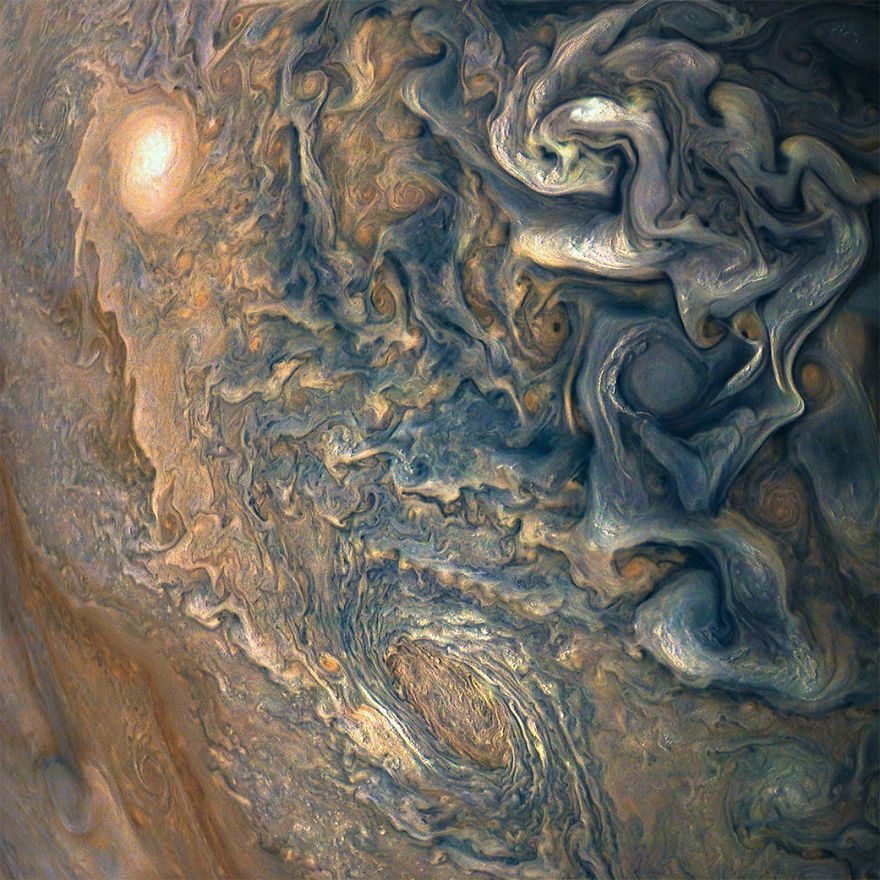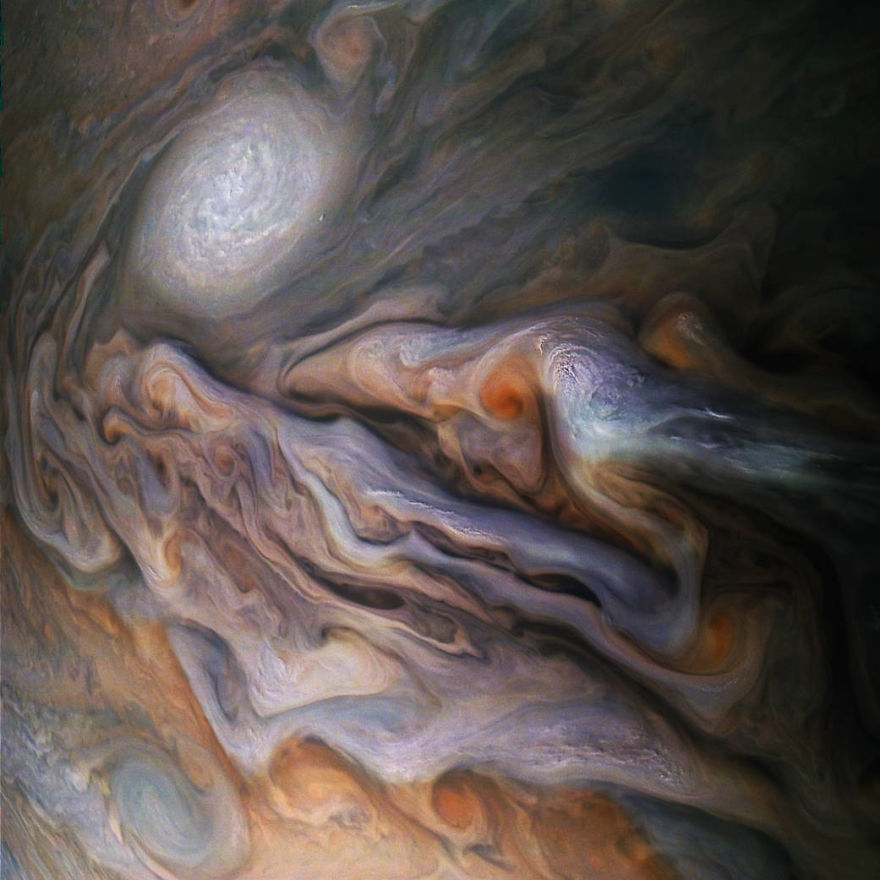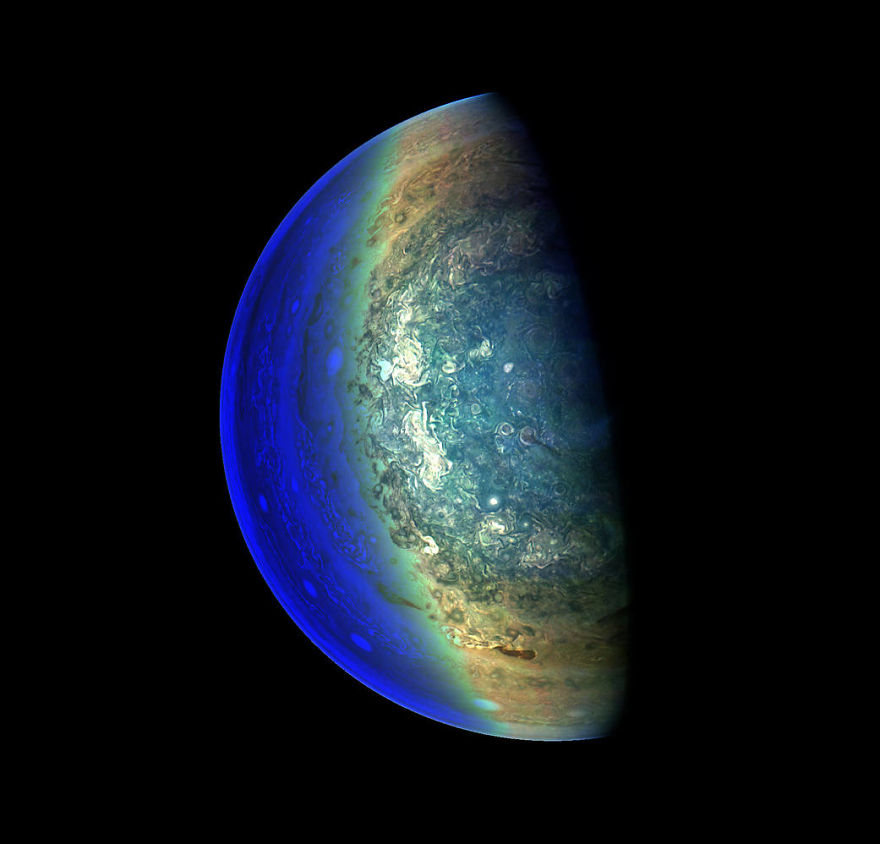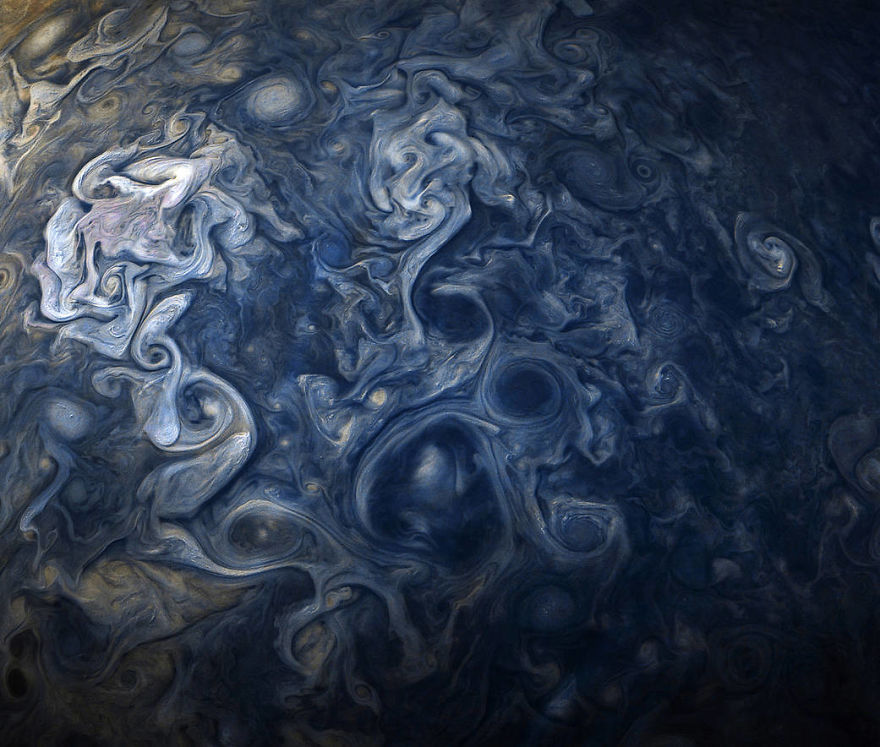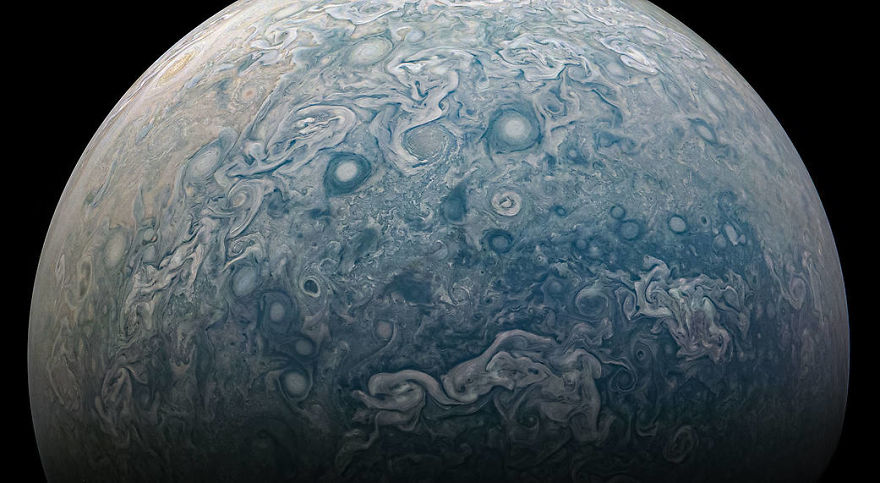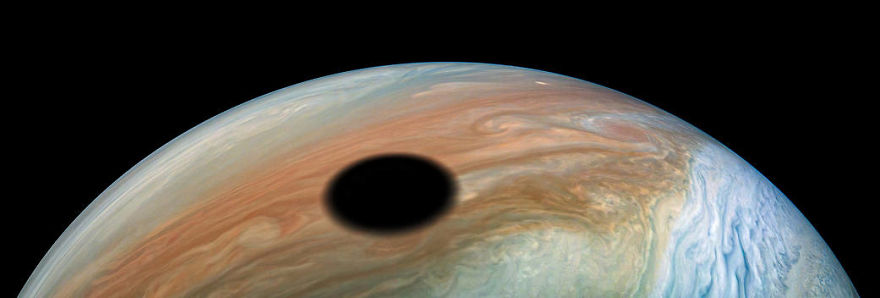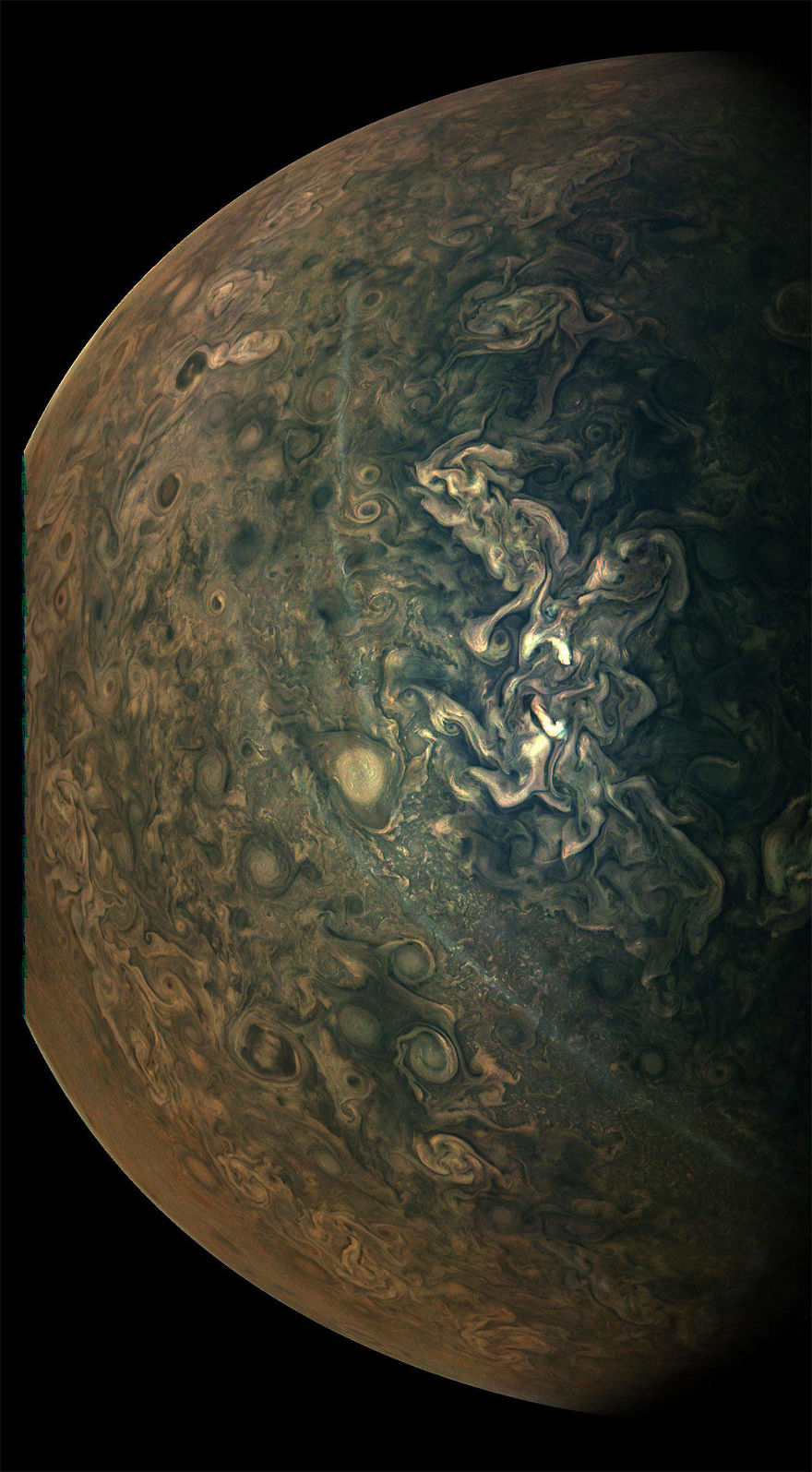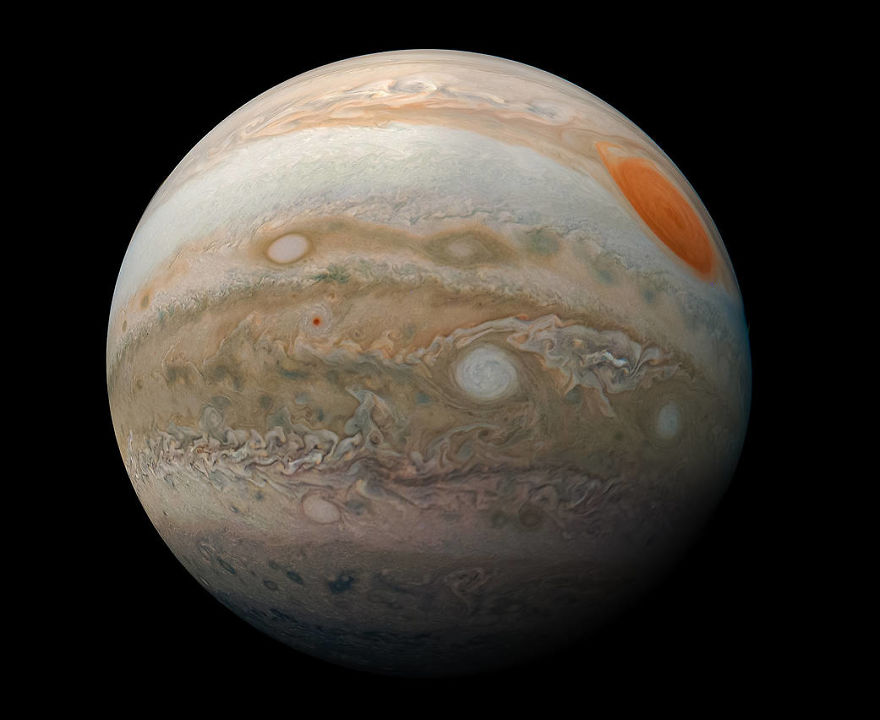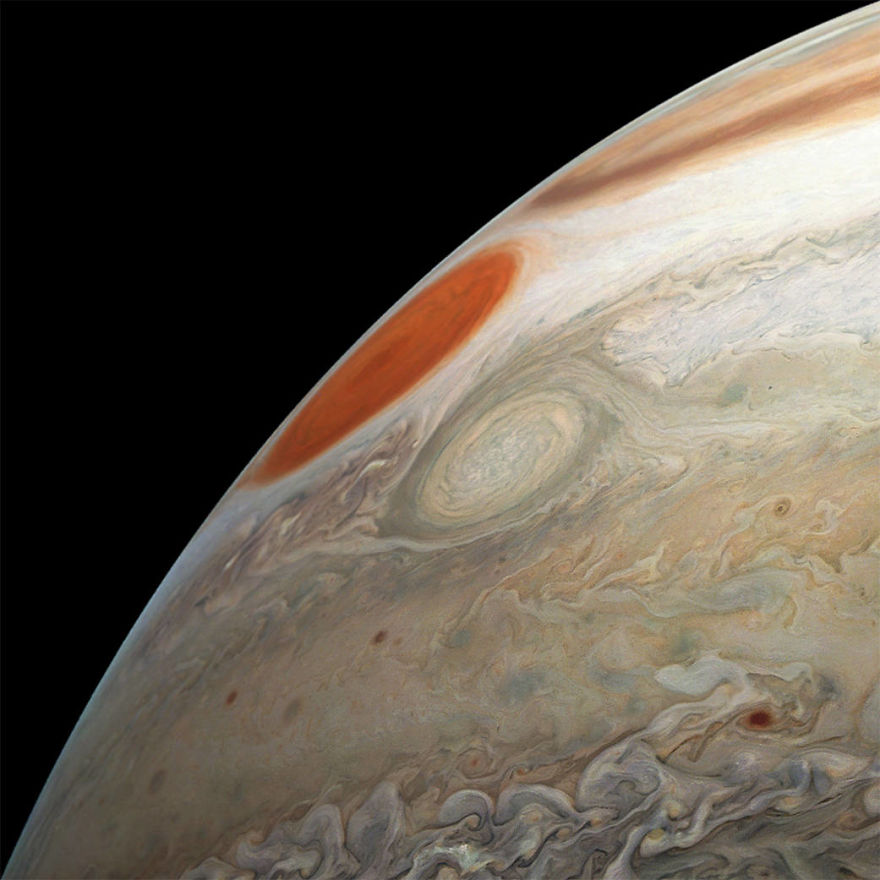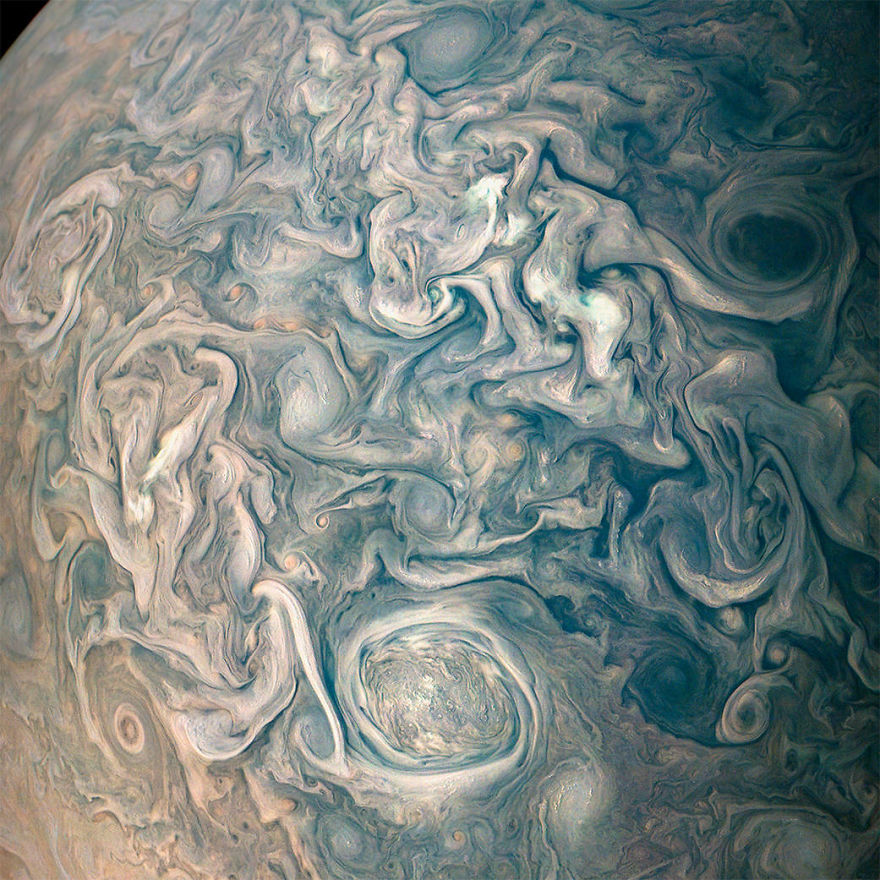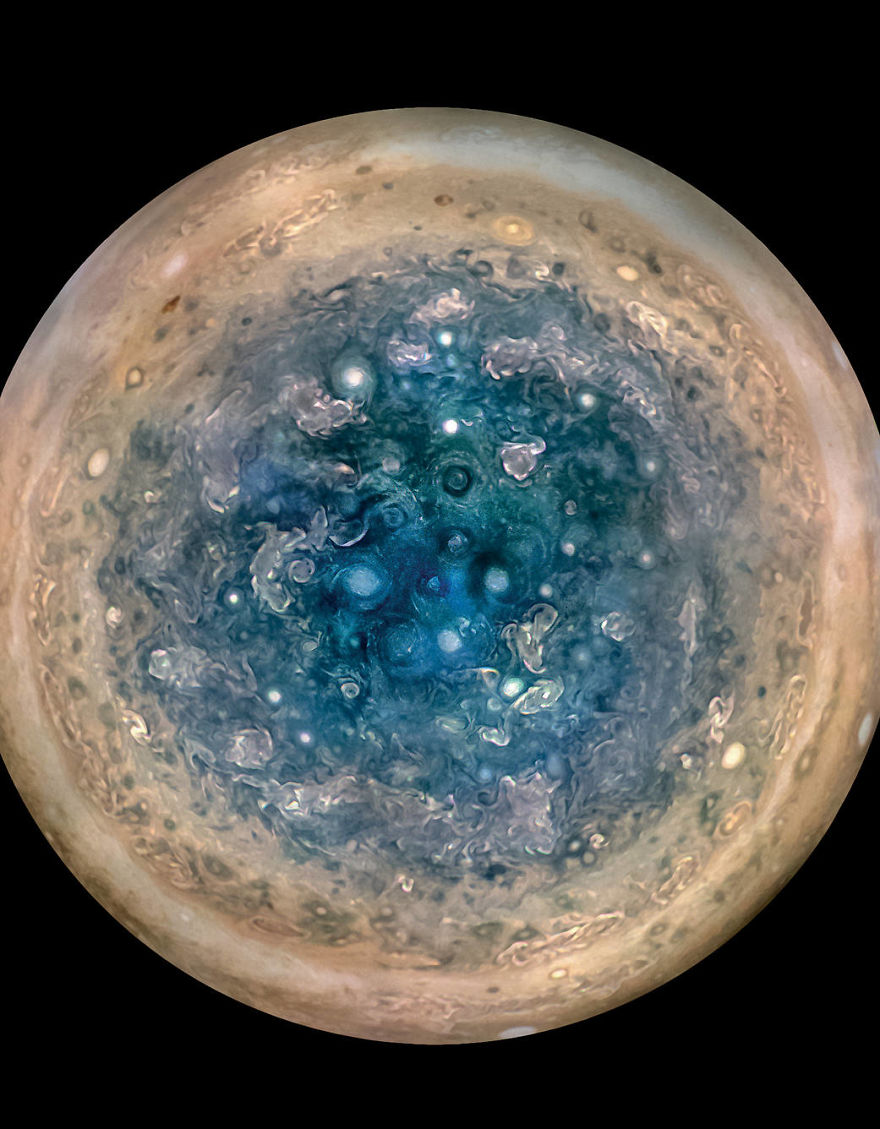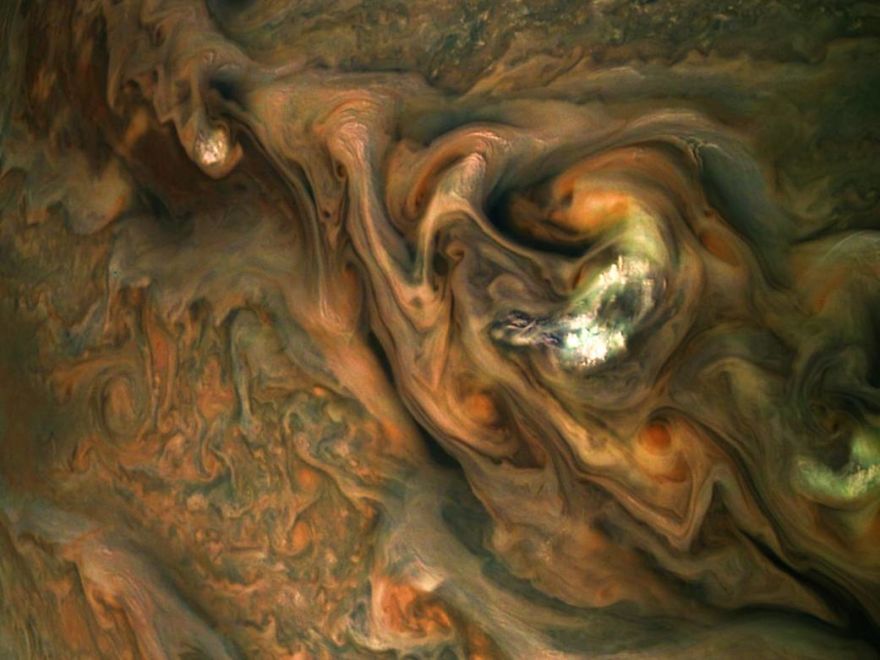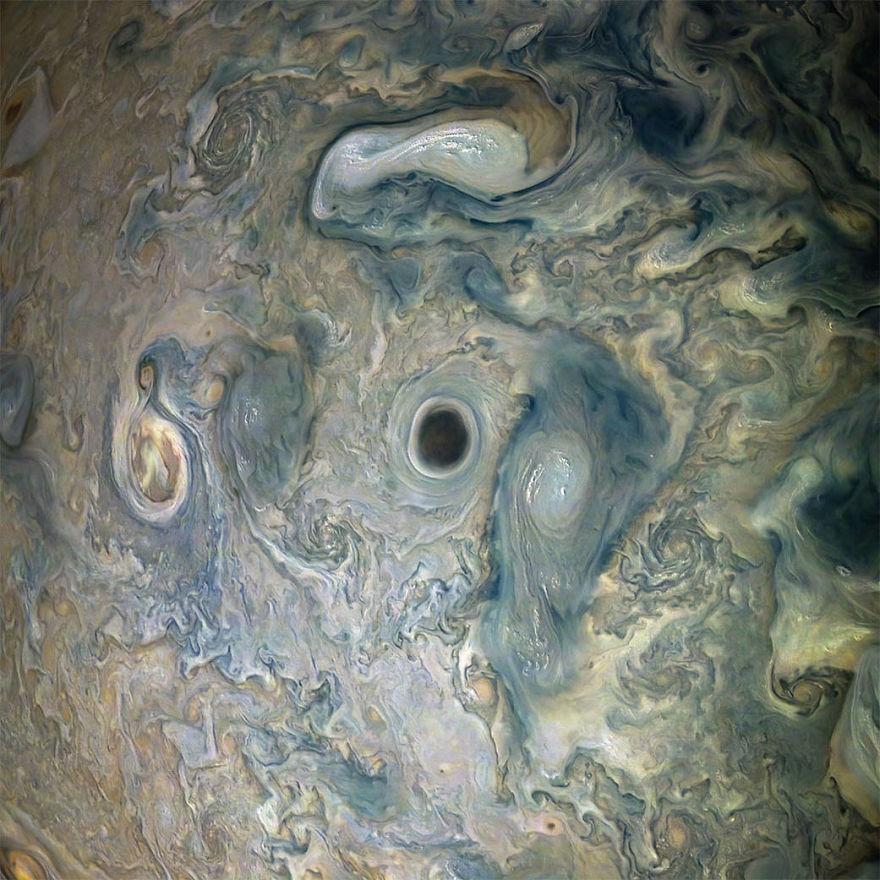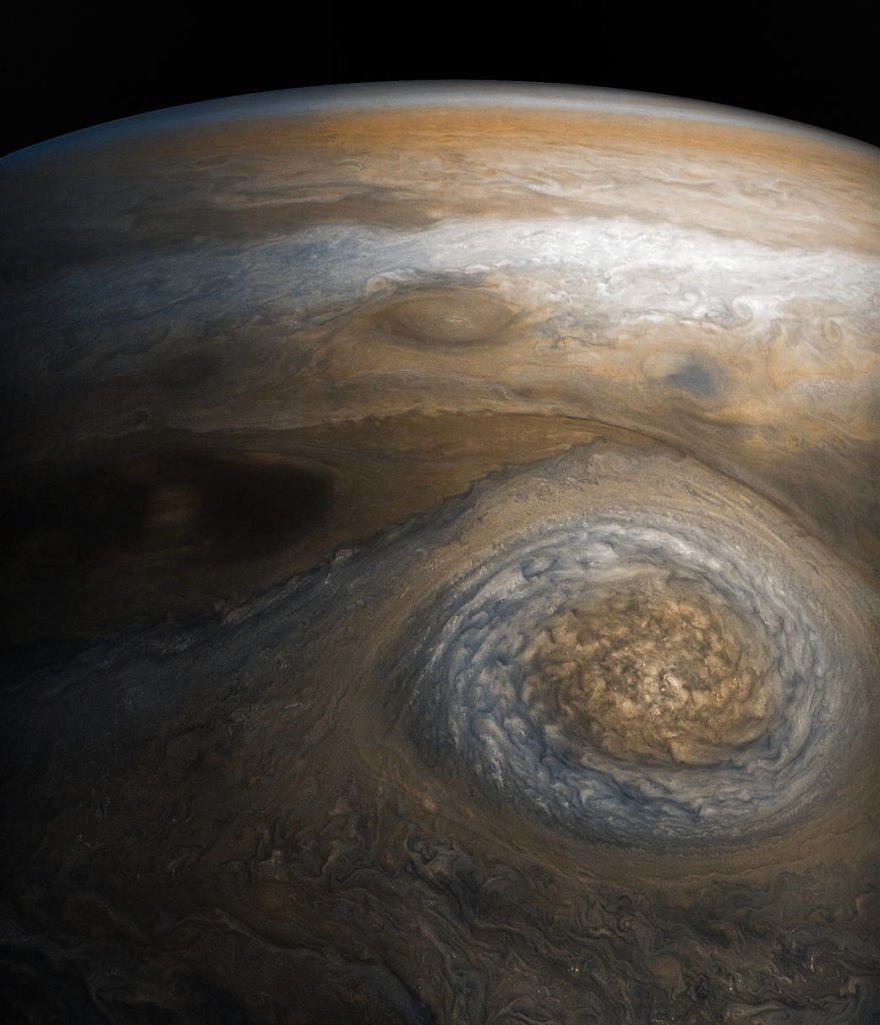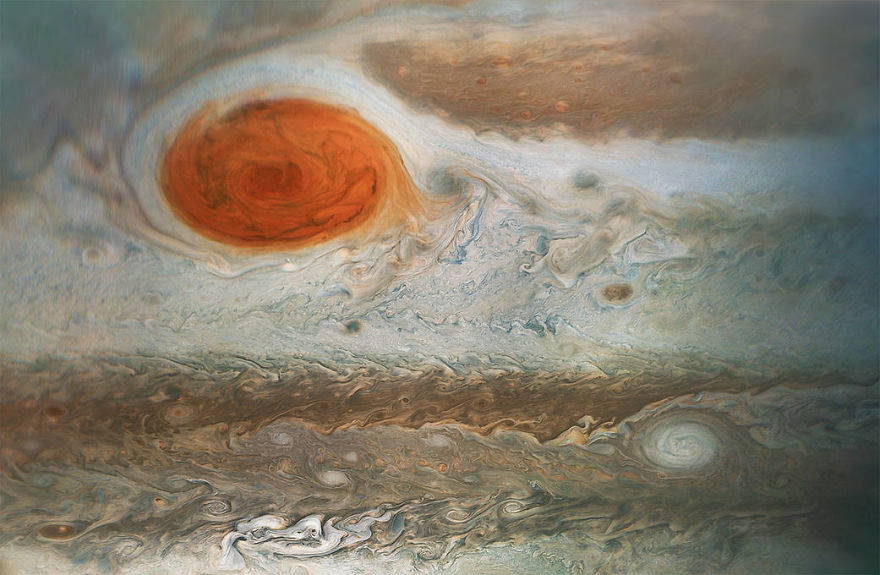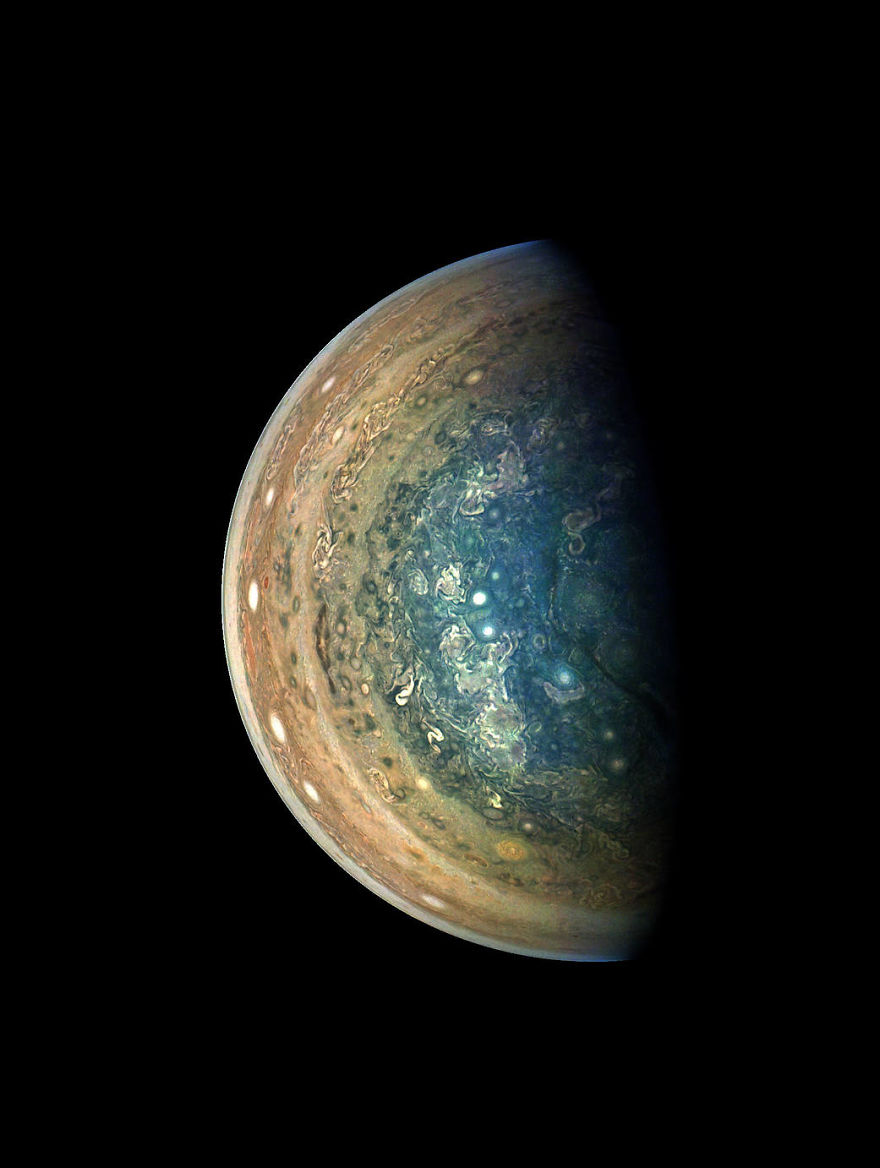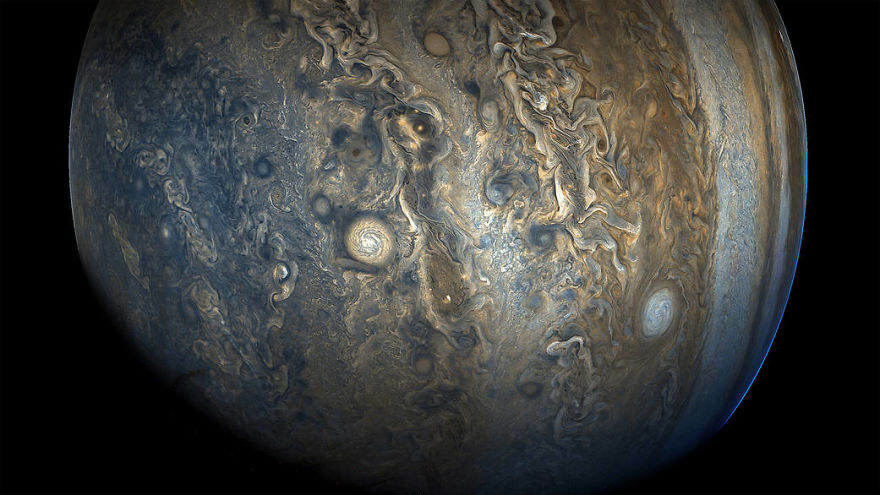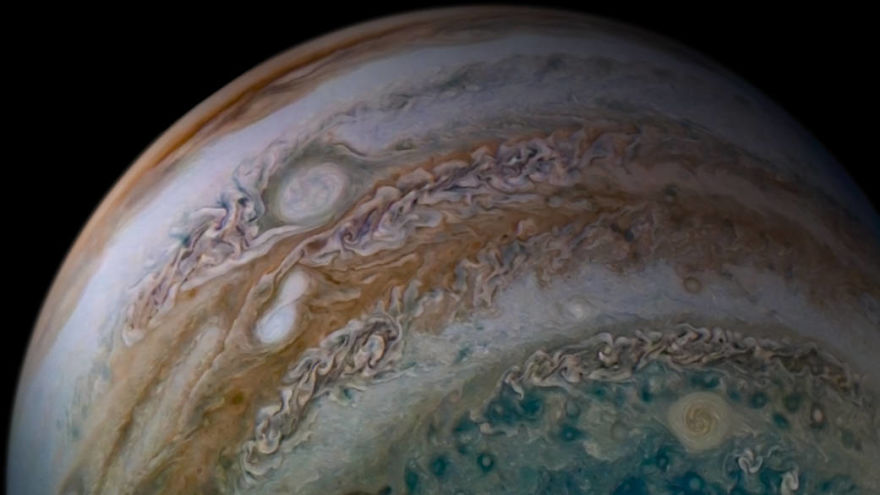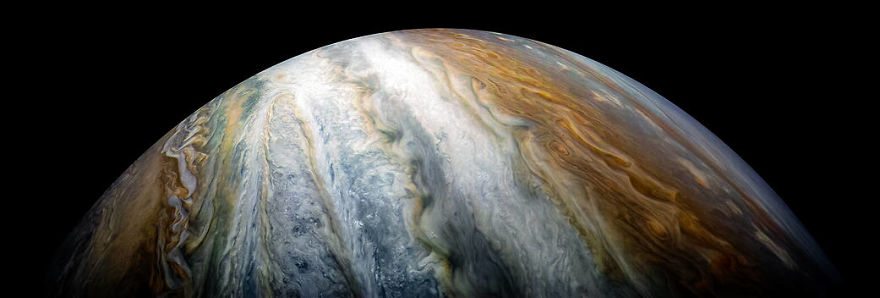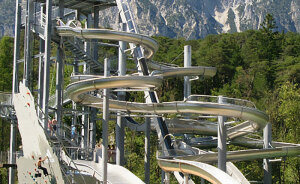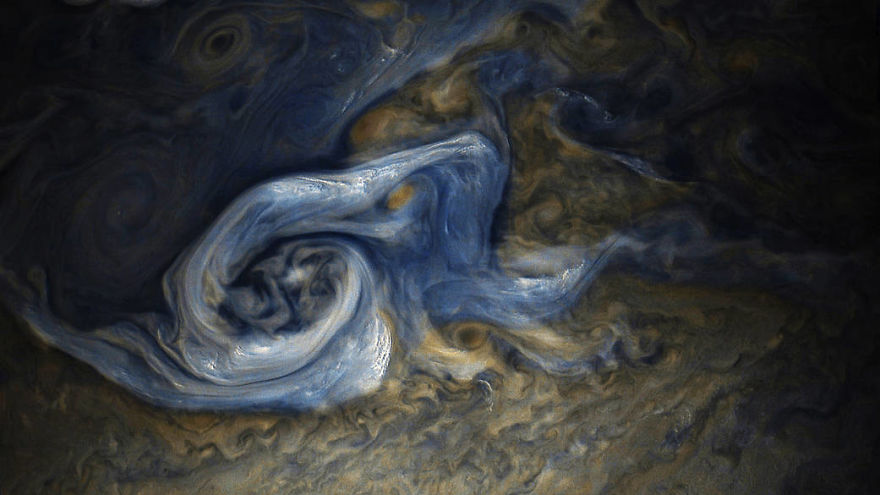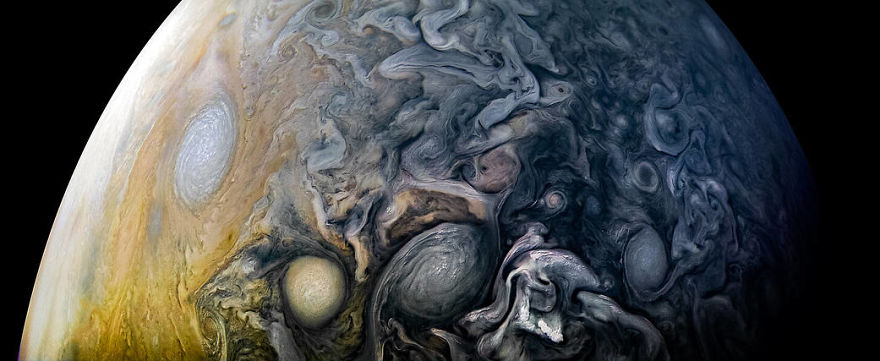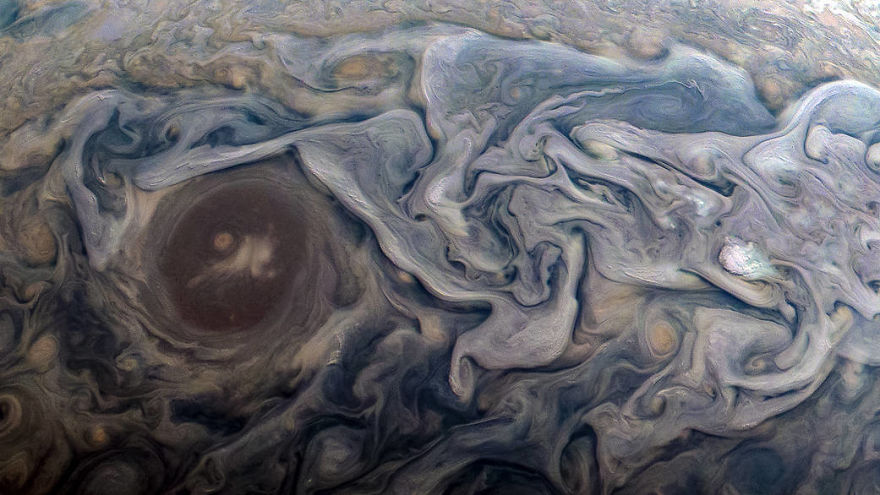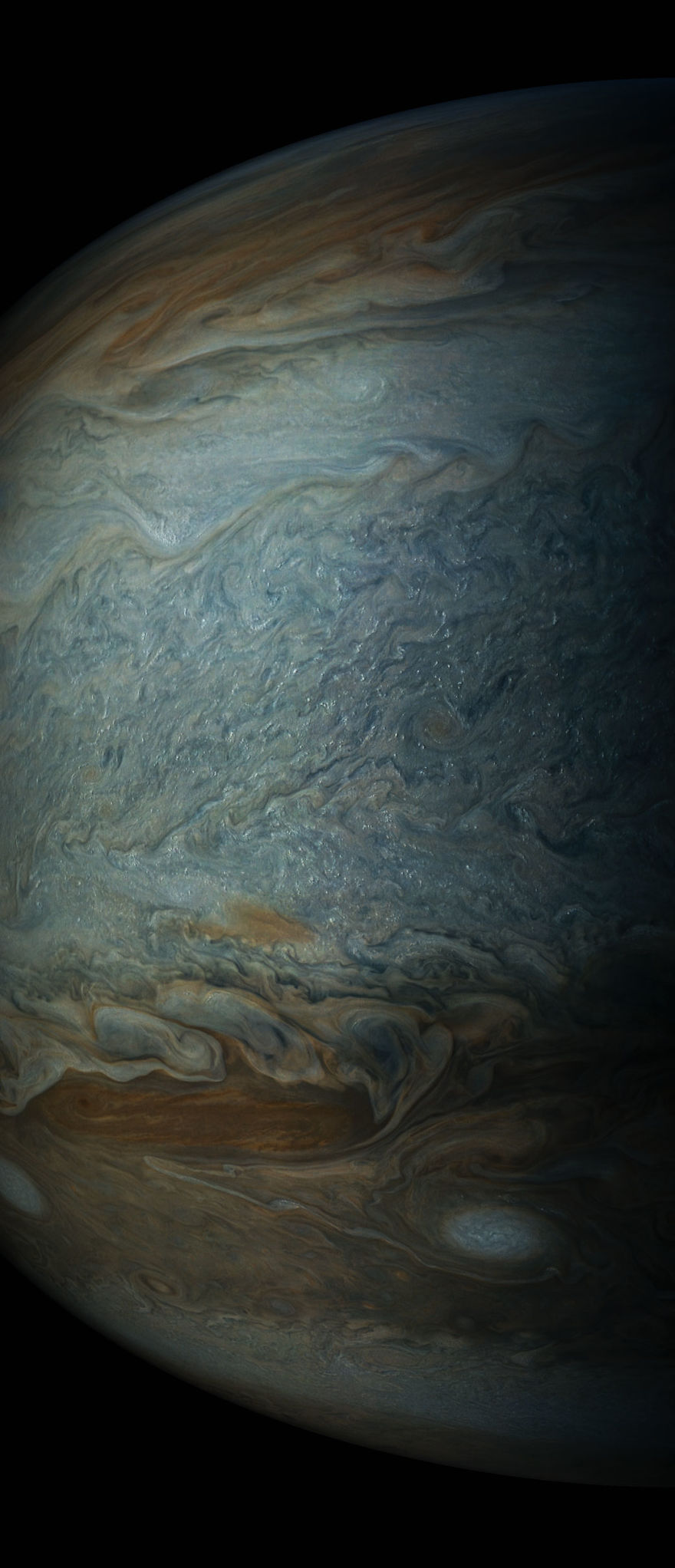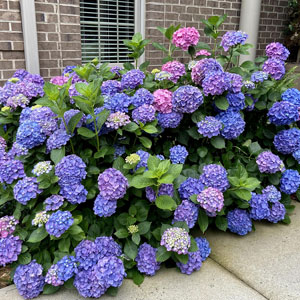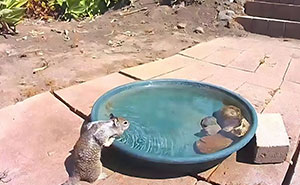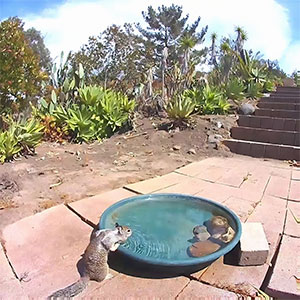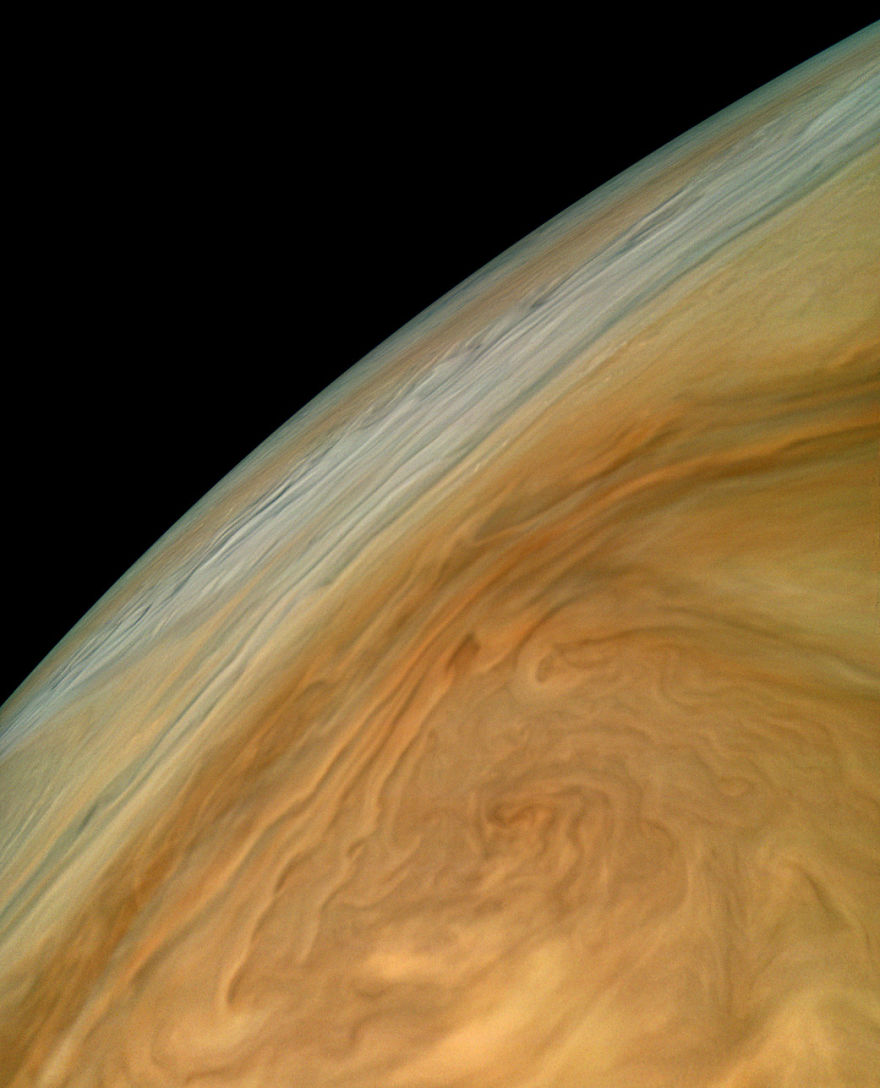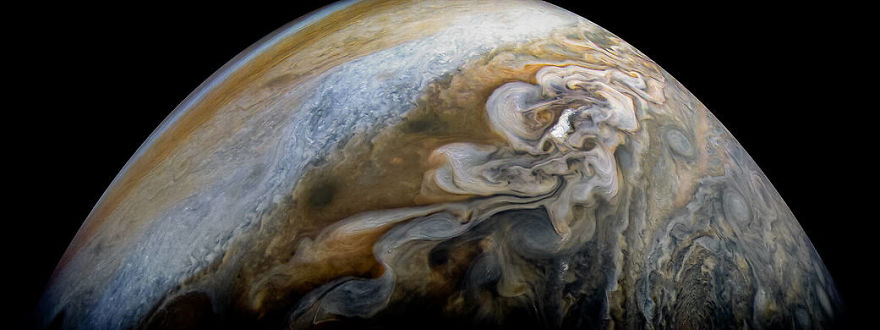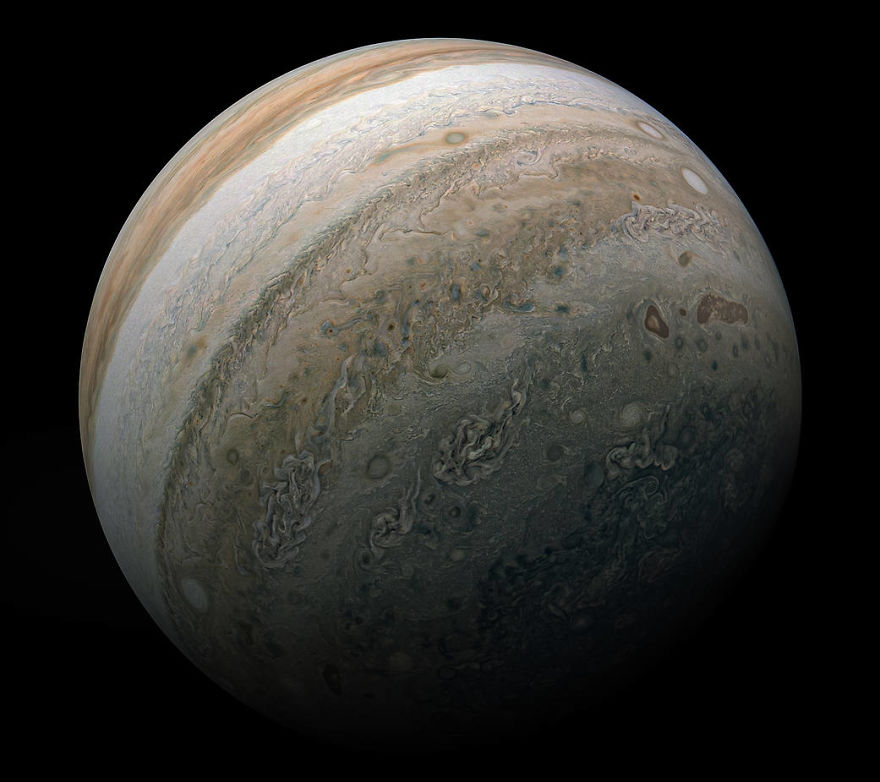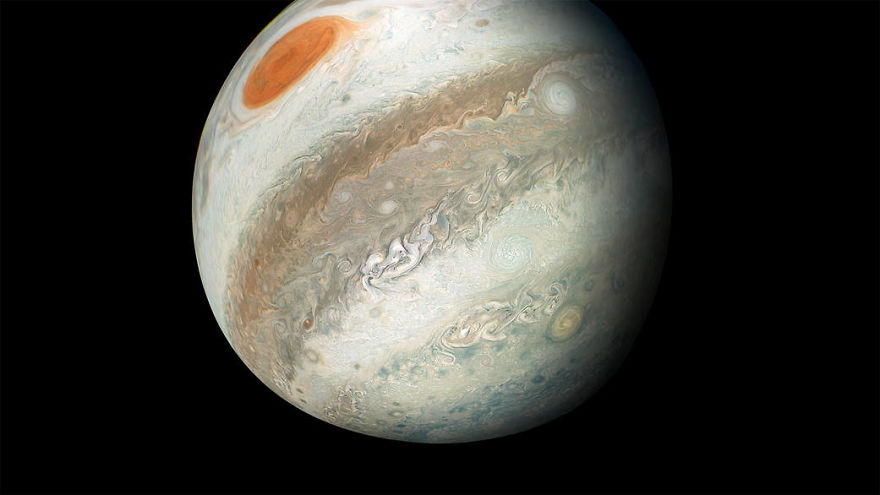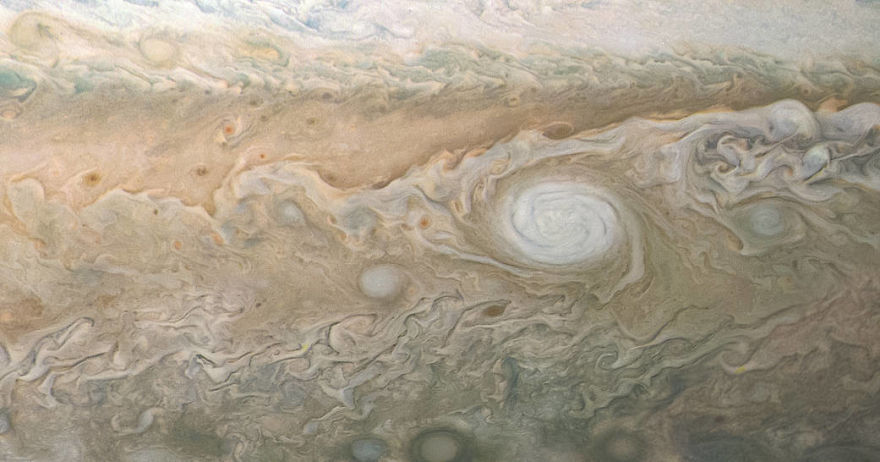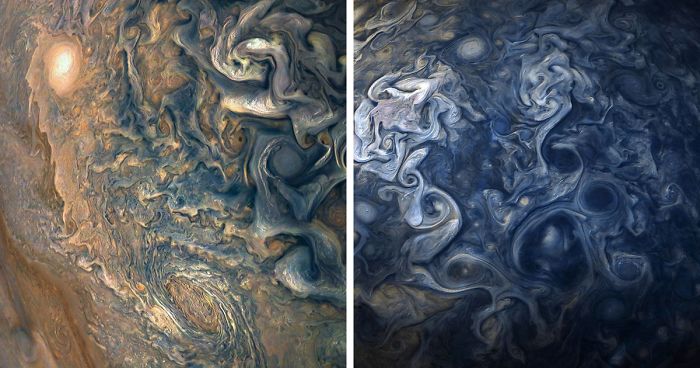
280Kviews
NASA Released 30 Amazing High-Def Photos Of The Largest Planet In Our Solar System—Jupiter
With all of the worrying things happening here, on earth, one way to take your mind off them is to look at the beauty of the cosmos. Luckily, NASA is still out there exploring outer space and providing us with the latest wonders. Recently The National Aeronautics and Space Administration released the brand new imagery of Jupiter. The captivating display of the stormy southern hemisphere of the planet which exists 484 million miles away from us, prompted us to share a list of most fascinating photos NASA has taken of the planet.
Nasa's Juno spacecraft has been taking snaps of the planet since it's first close pass by Jupiter in 2016. Since then, Juno took stunning images of and it, helping scientists learn the important information about the gas giant.
More info: nasa.gov
This post may include affiliate links.
NASA’s Juno spacecraft was a little more than one Earth diameter from Jupiter when it captured this mind-bending, color-enhanced view of the planet’s tumultuous atmosphere.
A multitude of swirling clouds in Jupiter's dynamic North North Temperate Belt is captured in this image from NASA's Juno spacecraft. Appearing in the scene are several bright-white “pop-up” clouds as well as an anticyclonic storm, known as a white oval.
This image captures the swirling cloud formations around the south pole of Jupiter, looking up toward the equatorial region.
wow...this looks like something Van Gogh would do. this is spectacular
See Jovian clouds in striking shades of blue in this new view taken by NASA’s Juno spacecraft.
During its 24th close flyby of Jupiter, NASA’s Juno spacecraft captured this view of a chaotic, stormy area of the planet’s northern hemisphere known as a folded filamentary region. Jupiter has no solid surface in the same way Earth does. Data collected by Juno indicate that some of the giant planet’s winds run deeper and last longer than similar atmospheric processes on Earth.
Yes, for anyone who doesn't know about this, if you could go there, you would just fall into the planet, with the atmosphere getting thicker until you got stuck in it but there would not be any land to reach.
Jupiter’s volcanically active moon Io casts its shadow on the planet in this dramatic image from NASA’s Juno spacecraft. As with solar eclipses on the Earth, within the dark circle racing across Jupiter’s cloud tops one would witness a full solar eclipse as Io passes in front of the Sun.
NASA’s Juno mission captured this look at Jupiter’s tumultuous northern regions during the spacecraft’s close approach to the planet on Feb. 17, 2020.
I'd like to watch the weather presenters on Jupiter. "It's going to be pretty stormy today. Just like every day for the past billion years..."
This striking view of Jupiter’s Great Red Spot and turbulent southern hemisphere was captured by NASA’s Juno spacecraft as it performed a close pass of the gas giant planet.
Not-so-fun fact: The giant red dot is a storm that has been raging on for about 3 centuries, but it has been shrinking a significant amount lately, and could be totally gone by the time 20 or 30 years has passed.
This image of Jupiter’s turbulent southern hemisphere was captured by NASA’s Juno spacecraft as it performed its most recent close flyby of the gas giant planet on Dec. 21, 2018.
Someday we will have permanent, inhabited space stations near Jupiter. How lucky will the people on them be with a free, ever-changing art gallery next door.
Thick white clouds are present in this JunoCam image of Jupiter's equatorial zone. These clouds complicate the interpretation of infrared measurements of water. At microwave frequencies, the same clouds are transparent, allowing Juno's Microwave Radiometer to measure water deep into Jupiter's atmosphere. The image was acquired during Juno's flyby of the gas giant on Dec. 16, 2017.
This image captures swirling cloud belts and tumultuous vortices within Jupiter’s northern hemisphere.
This image shows Jupiter’s south pole, as seen by NASA’s Juno spacecraft from an altitude of 32,000 miles (52,000 kilometers). The oval features are cyclones, up to 600 miles (1,000 kilometers) in diameter. Multiple images taken with the JunoCam instrument on three separate orbits were combined to show all areas in daylight, enhanced color, and stereographic projection.
If you, like me, can't quite picture that size: Distance from London to Beijing: 8161 kilometers or 5071 miles
This view from NASA's Juno spacecraft captures colorful, intricate patterns in a jet stream region of Jupiter's northern hemisphere known as "Jet N3."
NASA’s Juno spacecraft captured this view of an area within a Jovian jet stream showing a vortex that has an intensely dark center. Nearby, other features display bright, high altitude clouds that have puffed up into the sunlight.
as Colin L said, those storms we see span continents wide, maybe even earths wide!
A dynamic storm at the southern edge of Jupiter’s northern polar region dominates this Jovian cloudscape, courtesy of NASA’s Juno spacecraft.
This image of Jupiter’s iconic Great Red Spot and surrounding turbulent zones was captured by NASA’s Juno spacecraft.
This image of Jupiter’s swirling south polar region was captured by NASA’s Juno spacecraft as it neared completion of its tenth close flyby of the gas giant planet.
See Jupiter’s southern hemisphere in beautiful detail in this new image taken by NASA’s Juno spacecraft. The color-enhanced view captures one of the white ovals in the “String of Pearls,” one of eight massive rotating storms at 40 degrees south latitude on the gas giant planet.
I thought the String of Pearls referred to the meteorite which recently fell into Jupiter's atmosphere in a string of pieces. Perhaps I'm wrong, but I've often wondered if the big red spot wasn't created by a good-sized iron-based planet falling into Jupiter before known history, and is still dissolving in Jupiter's atmosphere after all this time. That would explain why the spot is shrinking. Has the meteorite we all witnessed a few years ago left storms in Jupiter's atmosphere that we can still see today? Jerri A.
This view of Jupiter’s atmosphere from NASA’s Juno spacecraft includes something remarkable: two storms caught in the act of merging.
Colorful swirling cloud belts dominate Jupiter’s southern hemisphere in this image captured by NASA’s Juno spacecraft.
This color-enhanced image of a massive, raging storm in Jupiter’s northern hemisphere was captured by NASA’s Juno spacecraft during its ninth close flyby of the gas giant planet.
See intricate cloud patterns in the northern hemisphere of Jupiter in this new view taken by NASA’s Juno spacecraft.
Dramatic atmospheric features in Jupiter’s northern hemisphere are captured in this view from NASA’s Juno spacecraft. The new perspective shows swirling clouds that surround a circular feature within a jet stream region called "Jet N6."
This image captures the intensity of the jets and vortices in Jupiter’s North North Temperate Belt.
Small bright clouds dot Jupiter’s entire south tropical zone in this image acquired by JunoCam on NASA’s Juno spacecraft on May 19, 2017, at an altitude of 7,990 miles (12,858 kilometers). Although the bright clouds appear tiny in this vast Jovian cloudscape, they actually are cloud towers roughly 30 miles (50 kilometers) wide and 30 miles (50 kilometers) high that cast shadows on the clouds below. On Jupiter, clouds this high are almost certainly composed of water and/or ammonia ice, and they may be sources of lightning. This is the first time so many cloud towers have been visible, possibly because the late-afternoon lighting is particularly good at this geometry.
Tiny looking, but at that scale that's oceans of water... It just has no where to fall
Colorful swirling clouds in Jupiter's North Equatorial Belt practically fill this image from NASA's Juno spacecraft. This is the closest image captured of the Jovian clouds during this recent flyby of the gas giant planet.
See swirling cloud formations in the northern area of Jupiter's north temperate belt in this new view taken by NASA’s Juno spacecraft.
Once called a failed Sun, perhaps Jupiter's gravity has Swallowed lots of things in its time. With the gravity of this planet its Hydrogen may even be in metallic state. Still I wonder if this planet is a gas giant has there been x-rays of the planet? or is that not possible due to how large the mass is?
NASA’s Juno mission captured this look at the southern hemisphere of Jupiter on Feb. 17, 2020, during the spacecraft’s most recent close approach to the giant planet.
This extraordinary view of Jupiter was captured by NASA’s Juno spacecraft on the outbound leg of its 12th close flyby of the gas giant planet.
A swirling, oval white cloud in Jupiter’s South South Temperate Belt is captured in this image from NASA's Juno spacecraft. Known as White Oval A5, the feature is an anticyclonic storm. An anticyclone is a weather phenomenon where winds around the storm flow in the direction opposite to those of the flow around a region of low pressure.
It will not be long until Earth is like this planet after us lot have buggered it up.
Note: this post originally had 44 images. It’s been shortened to the top 30 images based on user votes.
I find planet/space images so peaceful. I'd buy these images as art in a heartbeat.
You can download full res images from NASA/JPL's websites and have them printed. They are free/public domain images. Some of them are large enough to print really well at 8x10" and even larger. Most home printers won't do true fine art quality, but a print shop can and will, if you pay for it and supply them the image(s) on a USB stick.
Load More Replies...I find planet/space images so peaceful. I'd buy these images as art in a heartbeat.
You can download full res images from NASA/JPL's websites and have them printed. They are free/public domain images. Some of them are large enough to print really well at 8x10" and even larger. Most home printers won't do true fine art quality, but a print shop can and will, if you pay for it and supply them the image(s) on a USB stick.
Load More Replies...